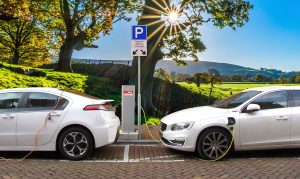
NextEnergy works with innovators to accelerate smarter, cleaner, more accessible solutions for communities and cities with a focus on smart mobility and smart buildings, homes, and infrastructure. When we think of smarter and cleaner, we typically think of technologies or solutions which are more integrated, connected, and more efficient. Integrating electric vehicles, buildings, and the grid will also improve our lifestyles, energy use, and environmental footprint.
For example, in commercial buildings, more efficient networked lighting that saves energy for both the building owner and utility, can also create a better or more pleasing user experience. With transportation, electric vehicles can be more efficient to drive and produce fewer emissions. EV owners today receive 90% of the energy to charge the vehicle either at home and at work. As electric vehicles gain more market share, there will be increased demand for fast charging at multiple locations. The key to meeting this demand will be seamlessly integrating electric vehicles, charging stations, buildings, and the grid to create greater efficiency for all while improving the user experience.
Currently, NextEnergy is working with industry and government partners to help accelerate these types of applications, and understand new ownership models and value streams. The knowledge we gain can help states craft innovative policies and accelerate faster adoption of these applications. At the National Association of State Energy Officials (NASEO) Annual Meeting this week, I will speak about NextEnergy’s experience in this space as part of a panel co-hosted by OurEnergyPolicy.org. NextEnergy looks forward to speaking with NASEO’s members and the OurEnergyPolicy.org community this week as each group works to develop innovative energy policies for greater integration in the 21’st century.
There are two problems with this discussion. Wireless connections with and between vehicles and other devices happen to be hazardous to plants, animals and humans. For a thoroughly documented international… Read more »
Before promoting all-electric cars, one should ask if all-electric cars are the right long-term answer. The case for all-electric cars has been based more on faith than analysis. I would… Read more »